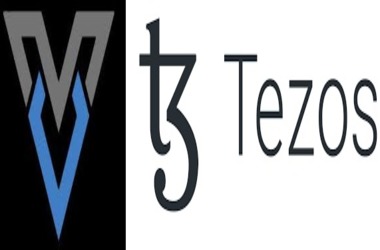 Circle, the firm behind the second-largest stablecoin in the world, revealed on Wednesday that USDC would soon be accessible on five more blockchains. USDC will be interoperable with Arbitrum, Cosmos, NEAR, Optimism, and Polkadot by early 2019, the company’s Chief Product Officer Nikhil Chandhok said today at Circle’s Converge22 conference in front of a live audience.
Circle, the firm behind the second-largest stablecoin in the world, revealed on Wednesday that USDC would soon be accessible on five more blockchains. USDC will be interoperable with Arbitrum, Cosmos, NEAR, Optimism, and Polkadot by early 2019, the company’s Chief Product Officer Nikhil Chandhok said today at Circle’s Converge22 conference in front of a live audience.
As is the case with USDC, stablecoins are cryptocurrencies tied to the value of a government-backed fiat currency, most often the US dollar. Typically completely collateralized by real-world cash and assets, they function as a robust crypto asset ostensibly impervious to the market’s volatility. For this reason, stablecoins are favored by conventional financial institutions entering the cryptocurrency market.
Circle’s VP of Product Joao Reginatto said in a statement, “Extending multi-chain support for USDC allows institutions, exchanges, developers, and others to innovate and have simpler access to a reliable and stable digital dollar.”
Today, the business announced that USDC would operate on Arbitrum, NEAR, Optimism, and Polkadot before the end of the year. Early in 2023, compatibility with Cosmos is anticipated to debut. With the extension announced today, the total number of USDC-compatible blockchains will shortly reach 14. Already used on Ethereum, Solana, Avalanche, and Polygon. Stellar, TRON, Algorand, Flow, and Hedera.
Cross-Chain Transfer Protocol will ease the process of transferring USDC across blockchains. The protocol will notably aid developers in the creation of wallets, applications, and financial services tools that facilitate and incentivize the movement of USDC between networks.
The business acknowledged in a statement that the present procedures for exchanging USDC across blockchains “create fragmented liquidity and provide a convoluted user experience.”
“Cross-Chain Transfer Protocol eventually allows USDC to act as a universal dollar liquidity layer across ecosystems, delivering the most capital-efficient method of transporting value across the crypto ecosystem,” stated Reginatto.
The protocol is anticipated to be accessible on Ethereum and Avalanche by the end of the year, with support for more chains to follow in 2023. The stablecoin with the greatest market capitalization relative to USDC is Tether’s USDT, which presently functions on 13 blockchains and will shortly extend to Polygon.
After Terra’s algorithmic stablecoin, UST, crumbled in early May, resulting in the loss of nearly $40 billion in value, asset-backed stablecoins like as USDC and USDT received additional importance and support. To maintain its dollar peg, UST was not backed by any assets and instead relied on a (ultimately incorrect) algorithmic link with Terra’s native token, LUNA.
In large part owing to the fact that both cryptocurrencies are backed by assets examined and overseen by American financial institutions, USDC and USDT maintained their worth and reputation amid the market turmoil that followed Terra’s demise. However, this error may cut both ways. Last month, when the U.S. Treasury blacklisted the Ethereum coin-mixing tool Tornado Cash and the wallet addresses associated with the service, Circle moved to preemptively freeze the USDC associated with these wallets, a move privacy advocates criticized as inappropriate compliance with excessive government censorship.
Given Circle’s apparent policy of cooperation with government sanctions, various firms, including MakerDAO, the biggest decentralized finance protocol by market value, have started divesting from USDC.








